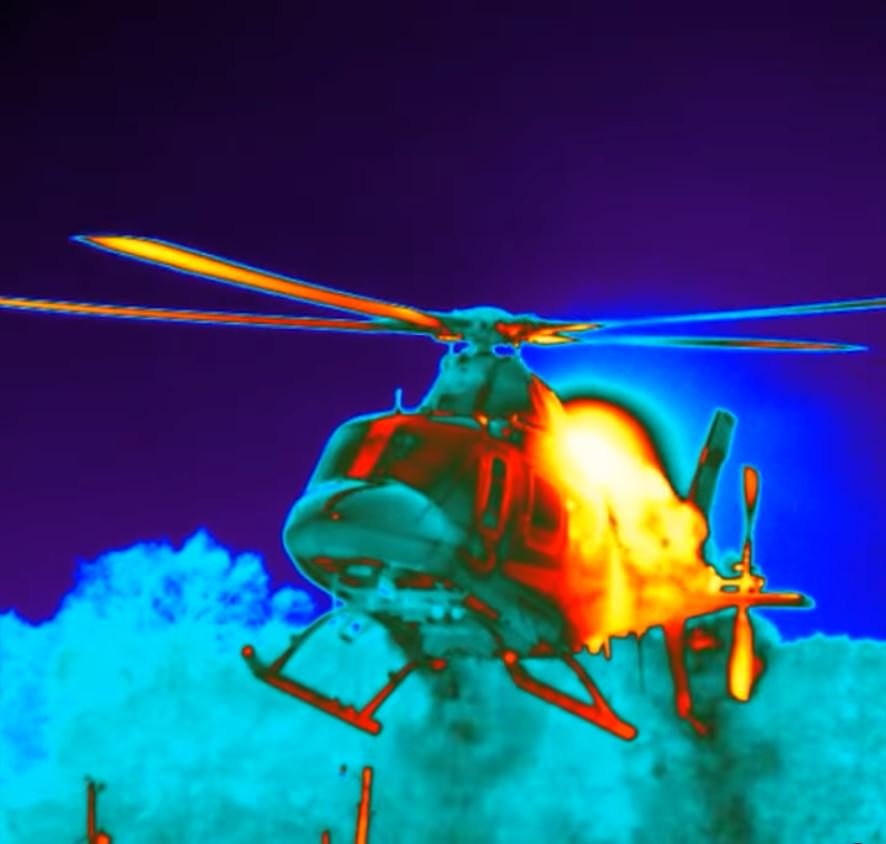The usefulness of thermal imaging cameras has been firmly established within many industries for non-invasive maintenance surveys and diagnostics. Still, not many people are aware of the success thermal cameras have had within the entertainment industry.
Thermography in general has been gaining significant interest throughout both film and television. Thermal imaging cameras introduced a whole new world view to directors and cinematographers alike and allowed them to bring even more exciting footage to our screens.
Thermal Camera Development
It took a long time for the benefits of thermal cameras to be embraced by tv and film, primarily due to how difficult they were to use in the past.
The first thermal images were taken as far back as 1929, thanks to a Hungarian physicist, Kalman Tihanyi, with the invention of the first infrared-sensitive camera. This initial camera was improved upon over the years until we had the first generated images from reflected light from the moon, sky and stars in the 1960s.
It wasn't until later that scientists at the Royal Radar Establishment (RRE) in the UK created the initial versions of the modern thermal imaging camera. However, in the 1970s, the sensors used in thermal cameras had to be cooled to close to -200C with liquid nitrogen. Issues like this are one example of how complicated the early cameras were to operate and maintain compared to current models.
With the advances in thermal imaging camera technology, new possibilities were opened up. In the 1980s, a far superior, portable, uncooled camera called Starsight was developed by Brian Harper. The Starsight model was applied to various applications for leak monitoring, electrical diagnosis and building maintenance. These new improvements with clarity and portability began to attract the attention of ingenious filmmakers eager to create striking visuals. Our experience providing thermal cameras for film production lets us know that a director can discover new ways of presenting footage unlike anything seen before with the appropriate thermal imaging training.
Thermal Imaging For Cinema
The most well-known example of thermal cameras in cinema is Predator's 1987 film. Earning the knick name 'Predator vision', this classic 80's movie starring Arnold Schwarzenegger consists of many visual sequences filmed with a Teledyne FLIR thermal camera similar to the ones we offer at Thermascan.
A more recent example is the acclaimed action thriller filmed in 2015, Sicario. The film's climactic final sequence takes place within a small pitch-black tunnel, an impossible place to film conventionally. Instead, oscar-winning Cinematographer Roger Deakins chose to use a thermal imaging camera to bring an intensely nail-biting sequence to the screen. The sequel in 2018, Sicario: Day of the Soldado, brought them back, embracing Teledyne FLIR thermal camera rental to create more striking visuals that will stick with audiences.
Another example for 2018 is the action epic, Rampage. Thermal cameras have been employed in real-life military applications for a long time, and movies want to emulate that in their fictional stories. Rampage has several scenes of an army command bunker viewing the exterior events through a selection of thermal imaging cameras connected to viewing monitors.
Thermal Imaging For TV
One of the most recognisable uses for thermal imaging cameras on TV is with animal nature documentaries. Wildlife photography and videography rely on subtly observing animals in their natural habitats, but until thermal cameras were introduced as a possibility. The BBC's work on the 'Planet Earth' series showed global audiences beautiful new ways of seeing these wild creatures.
Netflix also realised the fantastic footage you can capture with their show' Night on Earth'. This nature documentary series focused on specifically observing animals in the dark, an exceedingly difficult task to accomplish with a standard digital film camera. So for this extensive shoot consisting of 60 separate filming sessions, they used a combination of moonlight cameras, night vision goggles and many thermal imaging cameras. You can learn more about the challenges they overcame with the associated behind the scenes episode 'Shot in the Dark.'
It's not just educational programming that has embraced thermal imaging cameras. For example, thirty Seconds to Mars's performance of Walk on Water at the MTV VMA's was broadcast live with Teledyne FLIR thermal imaging cameras, making TV history.
Professional Thermal Imaging Footage Courtesy Thermascan
At Thermascan, we have enjoyed working with various creative productions to allow them to record thermal imagery with the high-quality Teledyne FLIR thermal imaging cameras for sale or hire within our catalogue.
If you feel your next project could benefit from high-quality thermal imagery, please browse our selection of recommended thermal cameras for film and TV available online for rent or hire, or feel free to contact us directly. We can discuss the specific needs of your current project. We can supply recommended cameras for your project and any necessary extra equipment, lenses, software and training you may require.




